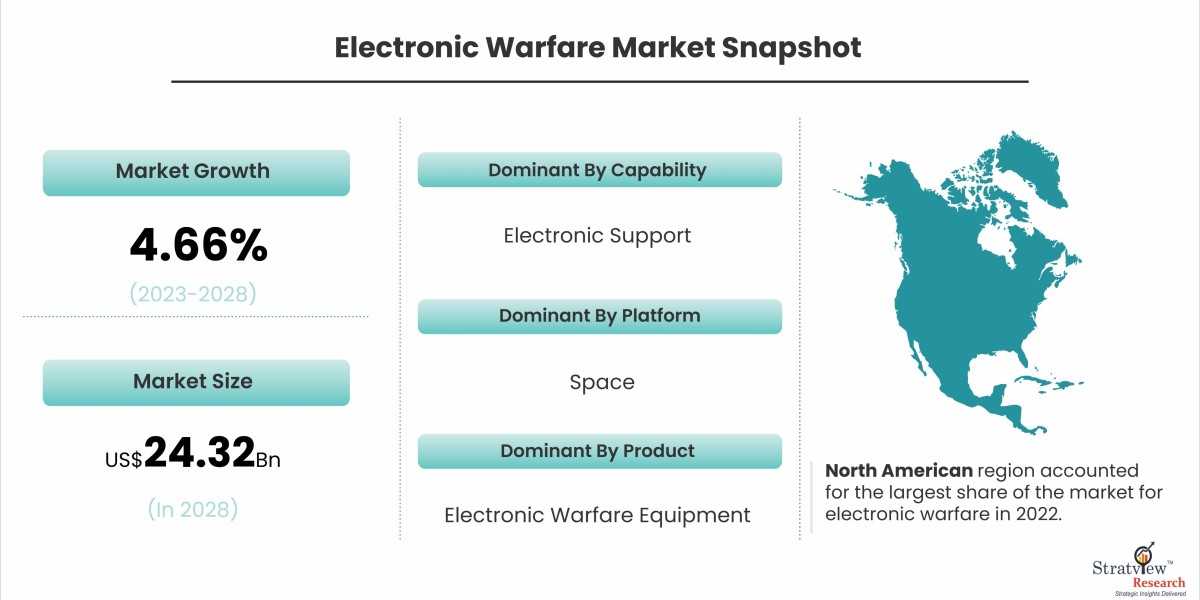The electronic warfare (EW) market is experiencing dynamic growth driven by evolving global security threats and rapid technological advancements. This article explores the current market dynamics and provides insights into the projected growth of the electronic warfare industry.
Growth Projections
According to Stratview Research, the electronic warfare market was estimated at USD 18.44 billion in 2022 and is likely to grow at a CAGR of 4.66% during 2023-2028 to reach USD 24.32 billion in 2028.
Key growth areas within the Electronic Warfare market include:
- Radar and ESM Systems: Continued advancements in radar technology and electronic support measures are anticipated to drive market growth, enabling enhanced detection, tracking, and identification of threats.
- Electronic Attack (EA) Systems: Demand for EA systems capable of disrupting adversary communication networks, radar systems, and command-and-control infrastructure is expected to increase significantly.
- Cyber-Electronic Warfare Integration: The convergence of cyber and electronic warfare capabilities will continue to gain prominence, with investments in AI-driven cyber-electronic warfare solutions aimed at countering hybrid threats.
- Autonomous EW Platforms: The deployment of unmanned systems equipped with EW capabilities is expected to grow, enabling autonomous electronic warfare operations and reducing human exposure to risks.
Current Market Dynamics
The electronic warfare market is witnessing robust growth fueled by increasing investments in defense modernization programs worldwide. Nations are prioritizing electronic warfare capabilities to enhance their defense posture against sophisticated threats, including cyber-attacks and adversarial electronic systems.
Technological advancements play a pivotal role in shaping market dynamics. Innovations in radar systems, electronic support measures (ESM), and electronic attack (EA) capabilities are expanding the operational capabilities of electronic warfare systems. Furthermore, the integration of artificial intelligence (AI), machine learning, and autonomous technologies is revolutionizing electronic warfare by enabling real-time data analysis, adaptive responses, and autonomous decision-making.
Geopolitical tensions and the resurgence of great power competition are driving demand for advanced electronic warfare systems across air, land, sea, and cyber domains. Nations are focusing on developing and acquiring next-generation electronic warfare systems that can operate effectively in complex and contested environments, enhancing their strategic deterrence and operational flexibility.
In conclusion, the electronic warfare market is characterized by dynamic growth driven by technological innovation, geopolitical tensions, and increased defense spending. As nations prioritize electronic warfare capabilities to address evolving threats, the market is expected to expand rapidly, offering significant opportunities for industry players specializing in advanced electronic warfare solutions.


